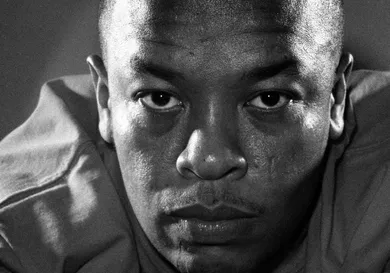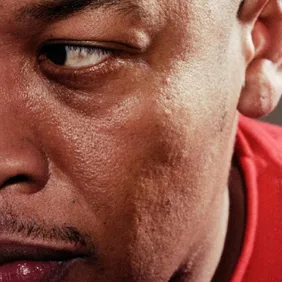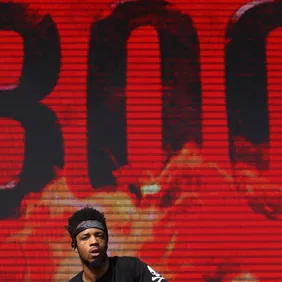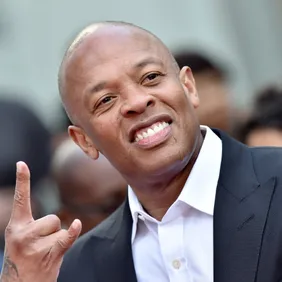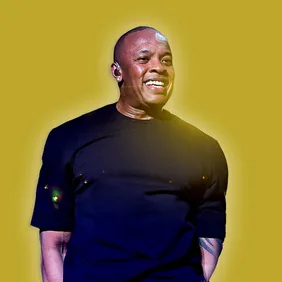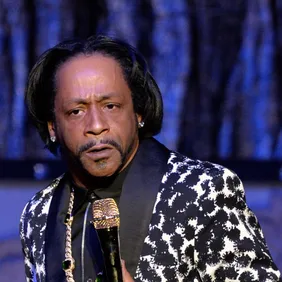Insert creepy melody. Add 808 bassline. Secure the bag.
In today’s climate, it’s not uncommon for a trap instrumental to sound “dark.” You’ve no doubt heard the telltale signs. An isolated, reverb-drenched synthesizer, not unlike those present in a classic eighties horror score, locked in a haunting minor key progression. Fans of either Metro Boomin or Murda Beatz can attest to the formula, and seeing as they remain two of the game’s dominant cultural influencers, countless imitators have emerged to keep the tradition alive.
Consider Murda’s work on Migos and Drake’s “Walk It Talk It.” Set in the key of D-Minor, Murda employs a truly ominous arpeggio that would be well suited for Howard Shore’s Candyman soundtrack. Listen to video of the instrumental being played on piano, which brings the sinister qualities to light. In truth, the whole thing is reminiscent of Boards Of Canada’s Beware The Friendly Stranger, which older heads might recognize from the unsettling viral web series Salad Fingers. It’s a surprise that no one has arranged some 808s over that one. Yet.
"Walk It Talk It" Piano Tutorial
Metro Boomin’s catalog is certainly varied, though many of his finest moments come in the shape of Dark Bangers. Look no further than Gucci Mane’s 2017 effort DropTopWop, which quickly emerged as a personal favorite. While Guwop was in fine form throughout, Metro Boomin quietly delivered his A-Game, conjuring a tense and feverish vibe throughout the ten song trap odyssey. From the futuristic melancholy of “Hurt A N***a Feelings,” to the nursery rhyme from hell that is “Finesse The Plug,” Metro proved that trap music could stand alongside some of horror’s most unsettling scores.
For a bit of context, compare Gucci Mane's “Hurt A N***a Feelings” with “Detroit” off the It Follows soundtrack. Not too far off, are we? Musically, we’re operating in the same realm, especially if you strip away the 808s. Both Disasterpeace and Metro use minor key arpeggios to evoke feelings of loneliness; the choice to utilise an analog, reverberated synth gives each piece a distinctly alien feel. Admittedly, the inherent “hard” nature of trap drums serves to dilute some of the eeriness, but the foundation remains evident.
Disasterpeace - "Detroit"
While trap has certainly helped cement its popularity, the Dark Banger has undergone a long and storied history. For years, Shady/Aftermath carried the artform into the mainstream, with Dr. Dre and Eminem solidifying themselves as two of hip-hop’s most gleefully macabre. While you might expect it from the horrorcore-friendly Slim Shady, Dre’s involvement in the so-called “dark arts” run Pagan-deep. Most recently, the blatant horror influence of Eminem’s Relapse comes to mind, which featured some of Dre’s most inspired production in years.
Dre, alongside the likeminded team of Mark Batson, Dawaun Parker, Mike Elizondo, and Trevor Lawrence, united to develop some of the darkest bangers to hit the mainstream. With a checklist including “3 Am,” “Same Song And Dance,” “Hello,” “Must Be The Ganja,” “Stay Wide Awake,” and “Music Box,” the Relapse sessions helped lay the foundation for the most popular horrorcore album of all time. Admittedly, Relapse production was Dre’s most obvious foray into darker territory, though the good Doctor’s affinity for the menacing had been foreshadowed for well over a decade.
Dr. Dre - "Murder Ink Instrumental"
Dre has been establishing himself a master of the minor key as far back as 2001 (the album, not the year). The obvious example is “Murder Ink,” which literally samples John Carpenter’s iconic “Halloween” score; even without the cold-blooded verses from Hittman and Ms. Roc, Dre’s arrangement paints a vivid image. Everything from the underlying synth strings to the innocent chirping birds plays a role in setting the tone. The darkness of 2001 doesn’t stop there. The obligatory sex jam “Fuck You” features a somewhat off-kilter melody, especially when you factor in the disturbing opening message. “Big Ego’s” is one of Dr. Dre’s coldest concoctions thus far, with a simple yet unforgiving piano chord progression; don’t forget the callous “rat-a-tat-tat,” complete with blood curdling screams.
Yet perhaps the most clear cut example of Dre’s aptitude for Dark Bangers comes from Busta Rhymes’ “Legend Of The Fall Off.” While hardly a banger in the traditional sense, Dre proves why he’s one of hip-hop’s most cinematic producers, deftly arranging foley-esque heartbeats and shovels into the mix. Once again, the line between hip-hop and horror are blurred, though few would be quick to hit either Busta or Dre with the “horrorcore” label. Yet “Legend Of The Fall Offs” seems tailor made for an equally disturbing visual component. But why is such a simple beat so evocative? Is it the melodic structure, which employs repetitive use of the same few notes? For whatever reason, the sound of a piano’s lowest octave seems to evoke a profound sense of hopelessness. Dr. Dre understands that better than most.
Busta Rhymes - "Legend Of The Fall Offs"
Even before Dr. Dre changed the game with 2001, the “Dark Banger” remained a flourishing artform. In 1997, 2Pac’s Hurt-M-Badd produced single “Hail Mary” dropped to widespread acclaim. Look beyond Pac’s tortured, biblically laden lyrics and examine the instrumental. Gothic funeral bells evoke images of processions and hearses. An eerie chime resonates, music-box-esque, making up the main melody. Through instrumentation alone, Hurt-M-Badd brought listeners into a world reflective of Pac’s inner struggle. “I’m not a killer but don’t push me,” he raps; it’s no wonder the music is tense, bordering on psychotic.
2Pac was no stranger to the dark banger, nor were Cleveland’s own Bone Thugs-N-Harmony. Therefore, it’s no wonder that their eventual collaboration “Thug Luv,” implemented several terrifying elements. A creeping piano bassline blends with a high-octave piano riff, sounding straight out of the hit series Goosebumps’ theme song. Not to mention, the masterfully implemented percussive gunfire, adding a near unprecedented level of menace. When I first heard this song, I was in grade five. It was, dare I say, the hardest shit ever. Still might be.
Bone Thugs-N-Harmony ft. 2Pac - "Thug Luv"
For whatever reason, producers have long gravitated toward musical qualities synonymous with dread, fear, and discomfort. And clearly, the masses are okay with that. All you need to do is listen to any given horror score, and you'll most probably find something tailor-made for hip-hop production. There are no doubt plenty of theories as to why a minor-key aesthetic may be so dominant in hip-hop, including the honest, vulnerable, and occasionally violent lyrical content. Still, even lyrically shallow songs like the aforementioned Migos anthem "Walk It Talk It" saunter their way onto the eerie spectrum. One thing is certain. Since the days of Geto Boyz, to the era of DJ Paul and Juicy J's Three 6 Mafia, and beyond, the Dark Banger has been a mainstay in rap, undergoing a variety of stylistic changes throughout the decades. If the current trend is any indication, that's not about to change.
